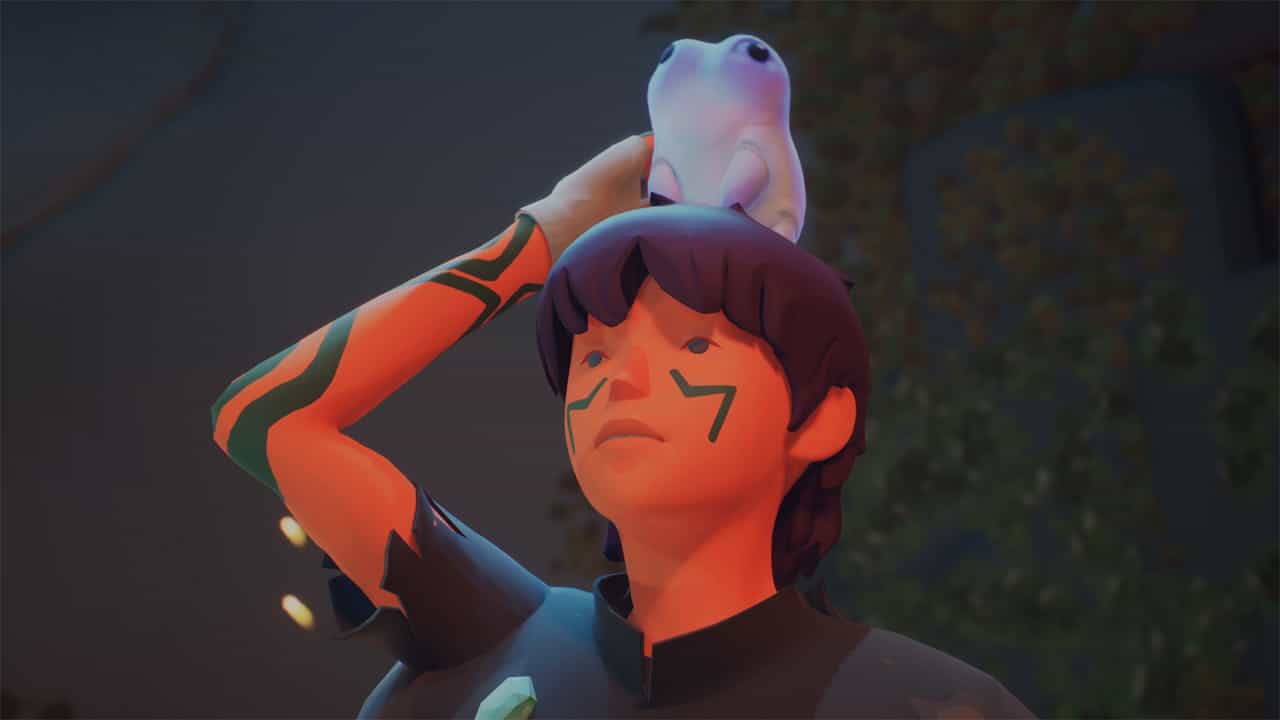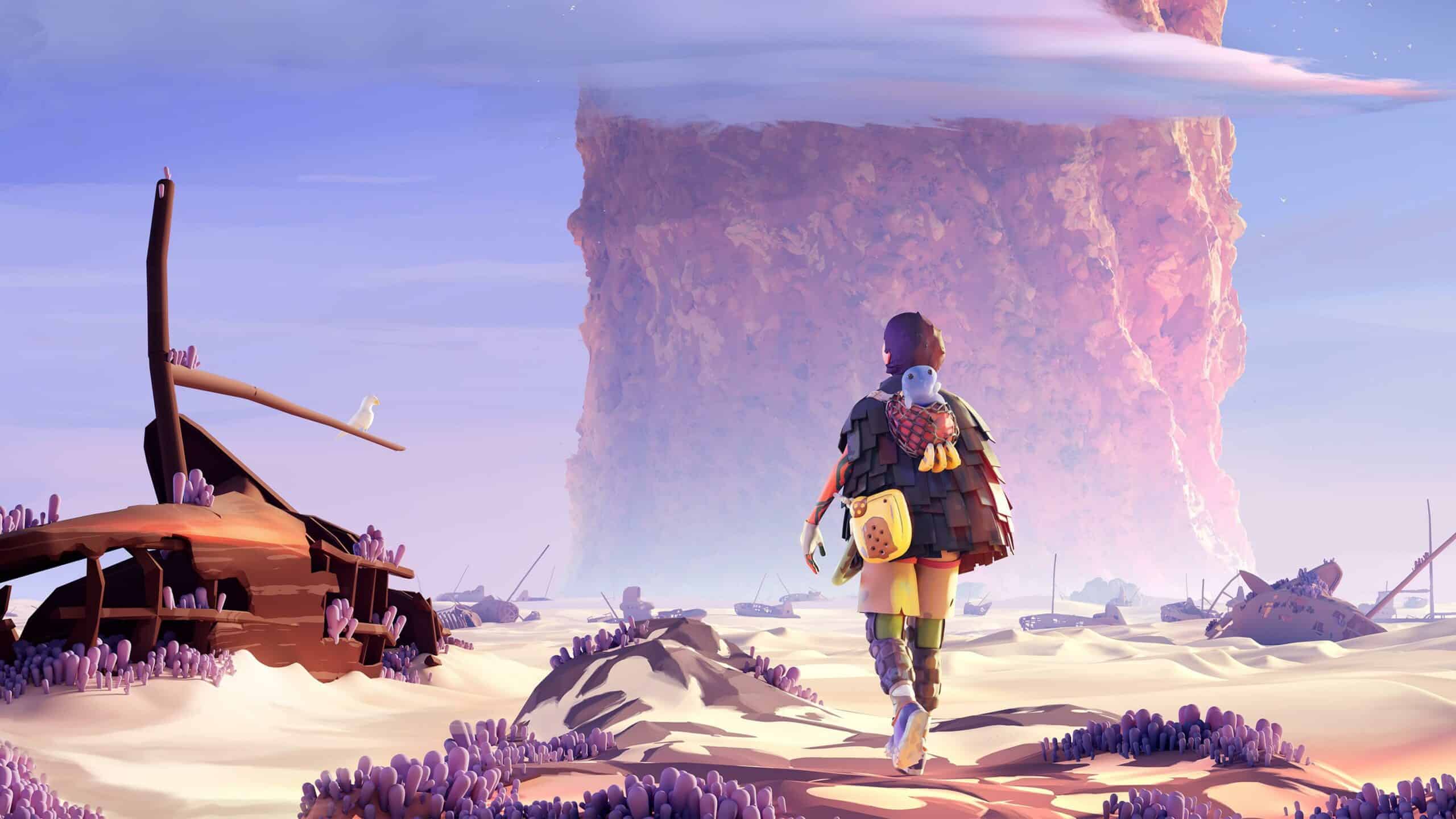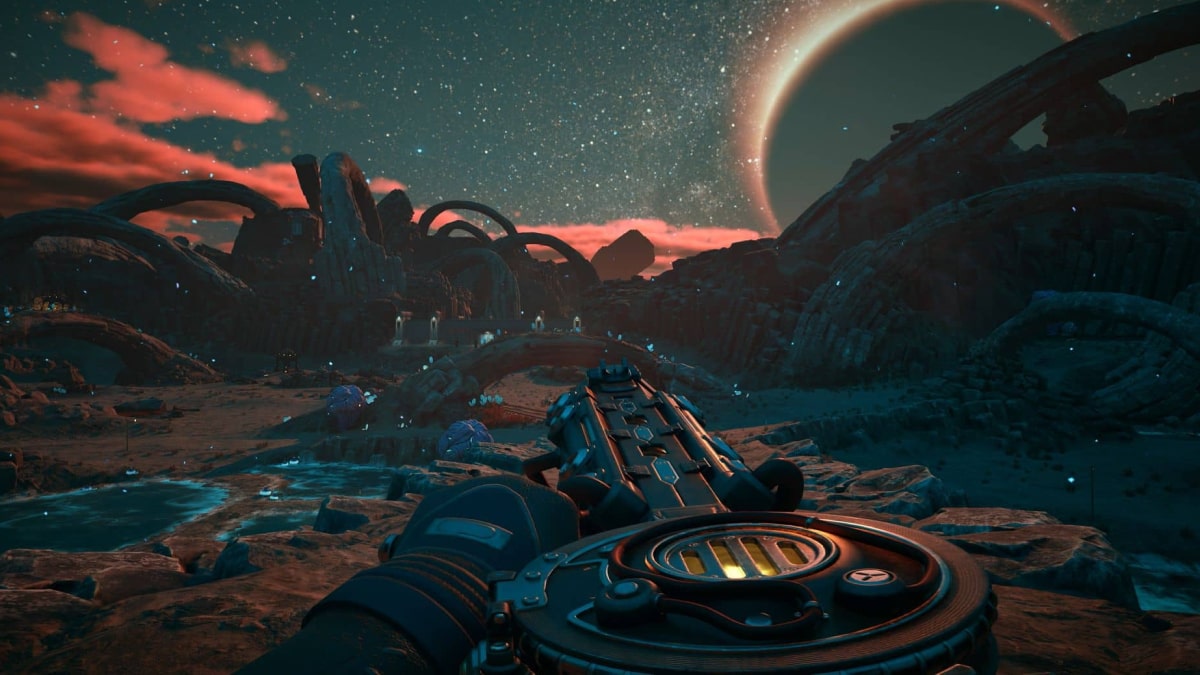You can trust VideoGamer. Our team of gaming experts spend hours testing and reviewing the latest games, to ensure you're reading the most comprehensive guide possible. Rest assured, all imagery and advice is unique and original. Check out how we test and review games here
Jusant opens with a pretty straightforward premise. You start at the bottom of a mountain, and need to start climbing your way up.
It’s the newest narrative game from Life is Strange developer Don’t Nod, but rather than deliberately introduce the world and story through dialogue or an opening narration, you’re dropped at the foot of a mountain, and almost have to piece together the story yourself from the environment and context clues. You quickly learn that some kind of post-apocalyptic disaster has left the land devoid of water, and the inhabitants have all seemingly disappeared. It’s your job to climb the mountain in front of you and go up to find out what’s happened.
And this very light-touch on hand-holding permeates throughout the game – a minimalistic UI only briefly appears to walk you through the basic mechanics as you come to them. You’ll attach your rope to an anchor point, and then start making your own way up the cliff face, using each trigger as your left and right arm, respectively. You’ll use the joystick to try and reach towards the various hand-holds as you climb and try and manoeuvre yourself ever upwards. It’s a satisfying movement mechanic that makes climbing feel tactile and like actual effort, a lot like real climbing. Further complications are added as you have an energy meter for your stamina, meaning you’ll have to find places to rest your arms and recuperate, and you’ve only got a certain amount of rope – so have to reach specific anchor points (or ledges and areas once both feet are touching level ground) so you can untether your rope from the previous anchor point to make a new one and reset your rope length.
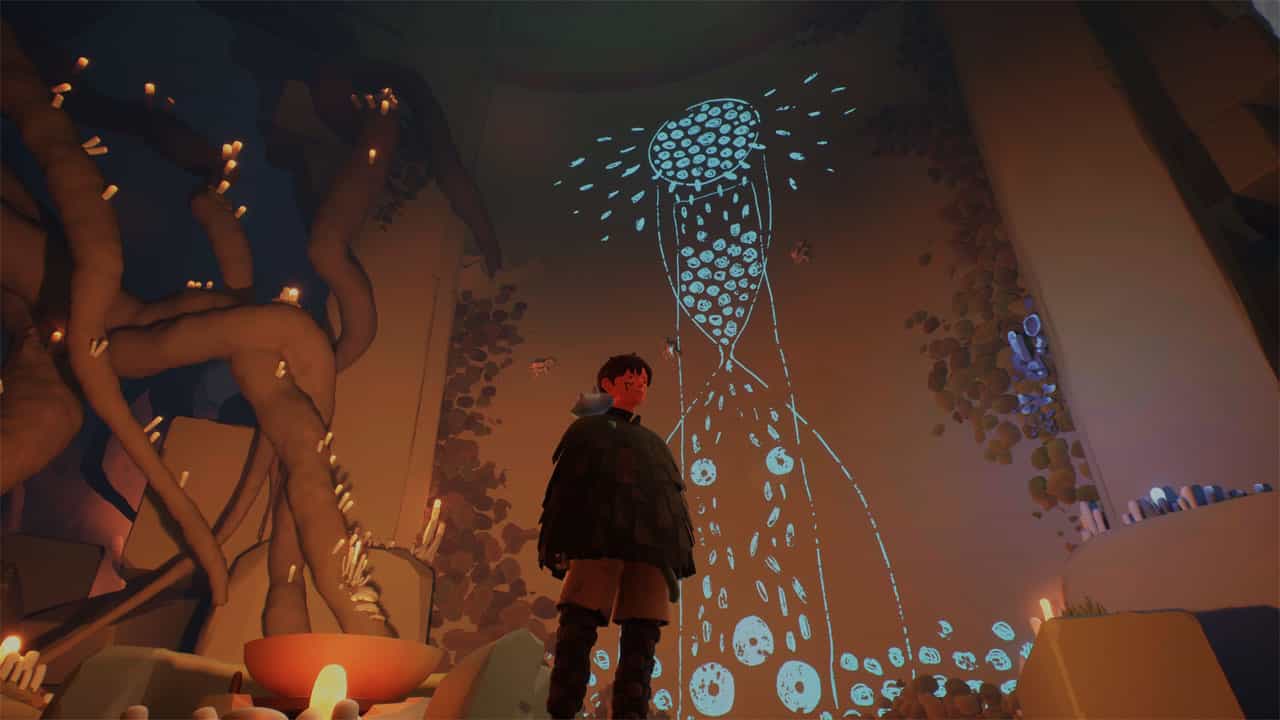
Further still, you’re able to jump and double jump (or, more accurately, scramble) – which gives you a nice boost of height, for the cost of a bunch of your stamina. Letting your stamina drain too much reduces your max stamina, so what seems on the outset a simple objective to make your way up is more complex than, say, Assassin’s Creed – you can try and find a fast route, but risk running out of stamina before you reach an anchor point. Or you can take a longer, safer route – but risk running out of rope. A really nice touch is that you can also set yourself additional manual sorta-anchor points at any point, up to a maximum of 4, between the main ones. It doesn’t make your rope any longer, but gives you a sort of rescue point should you slip and fall.
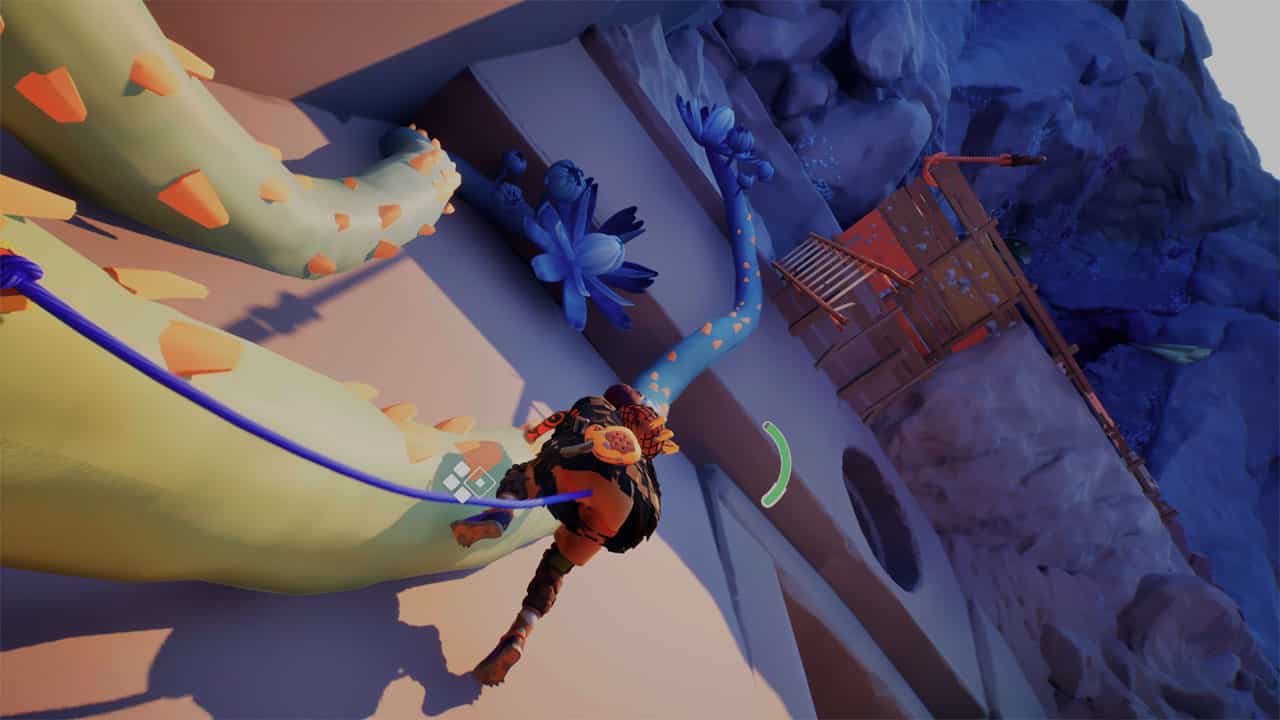
Crucially and brilliantly – freedom of choice and letting you play the game you want to is the name of the game here. The above system lets you make the game as hard or as easy as you want – if you want to play it safe and use plenty of these anchor points? Go ahead. Think you’re up to the challenge of getting to the next point without them? Do it. You’re never penalised or punished for the way you want to play. And thanks to this, it lends itself well to setting your own challenges for repeat playthroughs – it’s really easy to see how the speedrunning community will rally around this to try and find the most efficient way up, for instance. But it also can be a double-edged sword, as this freedom also means there’s a lack of tangible reward for doing so, outside of your own self-satisfaction (and an optional trophy here and there) – and perhaps that’s the point.
But of course, going up as fast as you can does leave you a little at risk of not getting all of Jusant’s story. As alluded to earlier, this light-on touch to the story continues as you play. As you climb the mountain you can explore more areas, ruins, and deserted settlements, with the world’s narrative gradually unfolding both through your own exploration of the environments, and a bunch of text logs you can find scattered around the world. Rather than you being forced to have the story told to you, you almost enter in media res and it’s pretty much left to you to piece what became of this place together yourself. It’s far more hands-off than something like, say, Life is Strange, but then the notes themselves are very well written – and if you’re into narrative, you’ll certainly feel compelled to try and find every one. But if story isn’t your thing, then you’re free to play on and just get the immediate story of the journey of you and your mysterious blue companion Ballast – who lives in your backpack, and also has several functions including highlighting both the direction of your next objective, plus the general direction of any secrets, collectibles or those aforementioned narrative notes. Just as with the story though it’s left to you, however, to decide how to actually get your destination.
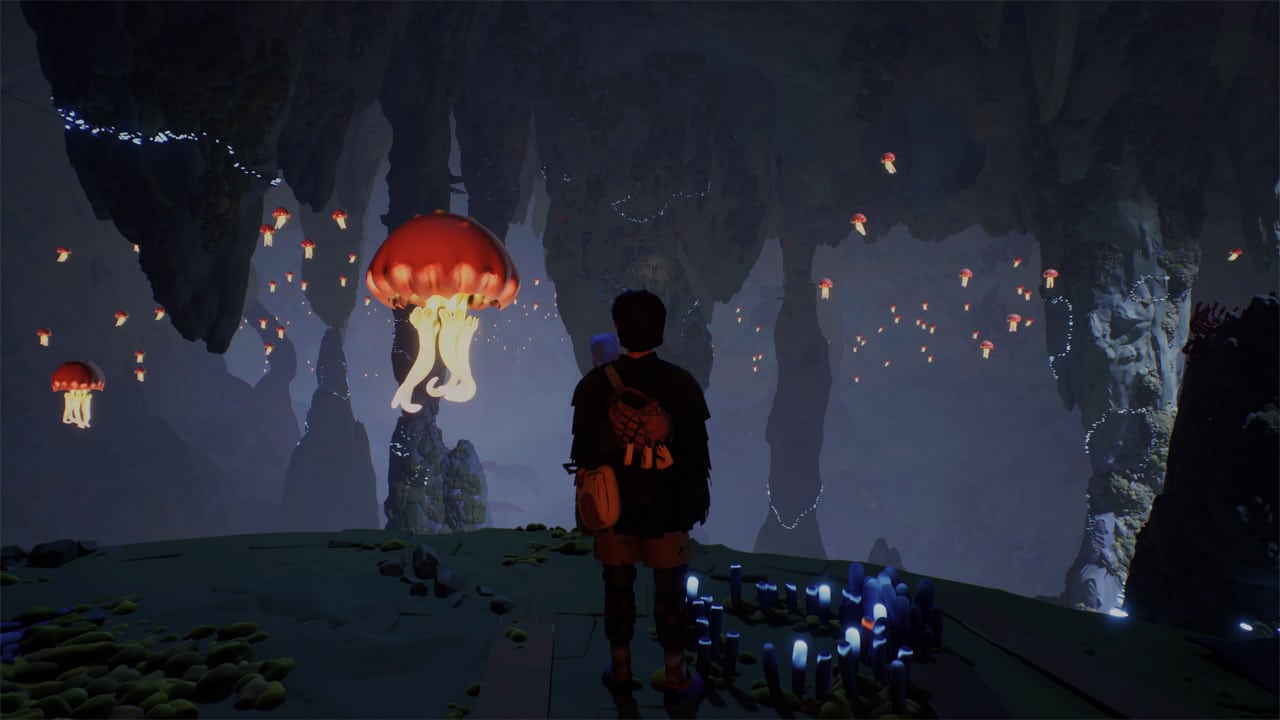
Jusant is certainly the antithesis of many of the high-profile games releasing at this time of year. Between your Spider-Man 2s, your MW3s, and your Alan Wake 2s, Don’t Nod’s latest is deliberately an experience that is staunchly offering none of the bombast or urgency those games often seem to encourage you to unwrap their mystery and experience their story. It’s entirely different to how those games try to usher you along via the ‘ooh look something exciting/scary is happening over there’ by your nose method. Rather, you’re almost getting to dictate a lot for yourself in Jusant. Whether that’s how much of the story you take in, the pace of your adventure, and how you choose to proceed – which is both great, and a double edged sword. Jusant isn’t necessarily a long game by any stretch; our PS5 clock said we finished the game in about 3 hours, and we weren’t intentionally trying to finish as fast as we could, as we still wound up ticking off maybe half of the game’s various collectibles and secrets in our first playthrough. But it’s a game that invites you to take it slow, to not slavishly follow the objective marker and instead take everything in and explore as much of its compact frame as you possibly can – and its short length does mesh well with its lower price point.
It’s not going to be the sort of thing everyone likes – it’s not really trying to be – but for those who want a change of pace from the hyperactive blockbusters of the current gaming season and want to while away a few hours in its world, Jusant is definitely worthy of your consideration.
Reviewed on PS5
Review code provided by the publisher
Jusant
- Platform(s): PC, PlayStation 5, Xbox Series S, Xbox Series S/X, Xbox Series X
- Genre(s): Action, Adventure, Indie, Puzzle
